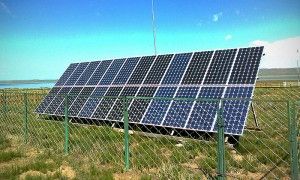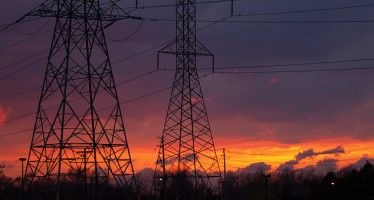CA green power keeps shifting costs to ratepayers

 California Energy Markets recently reported that three California cities just won agreement from regulators to reclassify solar power transmission costs as distribution. The cities are Pasadena, Riverside and Azusa.
California Energy Markets recently reported that three California cities just won agreement from regulators to reclassify solar power transmission costs as distribution. The cities are Pasadena, Riverside and Azusa.
That means the cities reaped a 25 percent reduction in long-term solar power contracts. This seemingly arcane fight over how electricity costs are divvied up provides another example of how the Golden State subsidizes “green” power.
First, three definitions:
- Transmission carries electricity at very high voltage (11,000 volts). It is defined as “the process of carrying electricity that is produced in turbines in a power plant to power substations that are located near populations.”
- Distribution carries electricity at low and safer levels (220 volts). It “begins after electricity lands at substations that are created near populations.”
- Voltage is like water pressure in a pipe while. “Watts,” the unit of measurement, is like the number of gallons of water flowing through a pipe.
California Energy Markets found that the three cities cut the purchase price of 25-year solar power contracts for wholesale electricity from $0.095 to $0.07 per kilowatt hour. That’s a 25 percent cut. And it only was for electricity generated by two 20-megawatt solar projects located in the High Desert near Lancaster.
Transmission, distribution or other costs were not included.
The 25 percent cost savings on the cities’ share of the wholesale price of electricity will be made up by other electric ratepayers within Southern California Edison’s service area being charged a higher transmission fee by California’s Independent Service Operator.
The higher fee will show up on customers’ electricity bills — which already are high. It will take a couple of years to see exactly how much more ratepayers will get shocked.
Transmission costs are typically greater than distribution costs. To transfer between the systems, substations use transformers to reduce high-voltage transmission electricity to low-voltage distribution of electricity. The power poles or buried electric lines in most communities are distribution facilities.
Reselling
Public utilities like Edison and municipal electricity utilities resell retail electricity to their customers. Operational, overhead and transmission costs have to be added to the $.07 per kilowatt-hour charged for retail electricity to customers.
For example, here are the charges for the electricity users in Pasadena:
- Transmission: $0.08 per kilowatt-hour.
- Distribution: $0.04 per kilowatt-hour.
- Current energy charge: $0.12 per kilowatt-hour.
- Total electricity charge: $0.20 per kilowatt-hour.
Let’s also look at the total electricity charge for some other areas:
- Los Angeles area average in Feb. 2014: $0.20 per kilowatt-hour. (Source: the U.S Bureau of Labor Statistics)
- California for all sectors (residential, commercial and industrial), as of Jan. 2014: $0.14 per kilowatt-hour. (Source: U.S. Energy Information Agency)
All that is high — and is calculated before the new “green” charges are tacked on for the socialized solar power. Consider this comparison of the average cost of electricity per kilowatt-hour for some sample states, plus Los Angeles — as of 2011, the most recent year of data for all states — except as noted:
$0.06 – Idaho
$0.07 – Washington State
$0.08 – Oregon
$0.09 – Nevada
$0.10 – Arizona
$0.10 – National Average
$0.13 – California 2011
$0.14 – California in 2014
$0.16 – Connecticut
$0.17 – Alaska
$0.20 – Los Angeles 2014
$0.32 – Hawaii
As can be seen from the full list, California’s 2011 cost of $0.13 was 43rd highest among the states. Its current cost, $0.14, is even higher.
And the cost for Angelenos in 2014, $0.20, is higher than the 2011 price for any state except Hawaii.
This must be added onto the high cost of living in California, which includes the highest income, sales and capital gains taxes of any state; and among the highest for housing.
The high electricity costs — now made higher by solar socialism — also contribute to California suffering the country’s highest poverty rate, if cost-of-living is taken into account, according to a recent study by the U.S. Census Bureau.
Solar power = socialized power
According to the U.S. Energy Information Agency, the unsubsidized cost of wholesale solar photovoltaic electricity is about $0.26 per kilowatt-hour. But, as we have seen, green power sells for $0.07 per kilowatt-hour.
That $0.19 difference — it’s 19 cents — between the wholesale price and the full system cost of solar power reflects:
- The costs that are subsidized by upfront tax write-offs and tax credits absorbed by taxpayers;
- The extra costs for grid balancing, extra transmission lines, and backup power that is absorbed by other electricity customers within each customer service area.
In other words, green power is largely socialized power that can compete with market-priced power only after receiving massive subsidies and the shifting of costs onto other customers.
Related Articles
High-Speed Rail Authority wins time in case brought by landowners
A judge has denied a claim filed by opponents of California’s high-speed rail project, saying that while they raised compelling
Electricity tier changes, rate hikes bring higher energy costs
With a recently approved proposal to hike electricity rates throughout the state and a new proposal from a local board
Folsom Prison Museum Free!
Anthony Pignataro: Until Nov. 24, that is. But yeah: admission to the Folsom Prison Museum is free (it’s normally $2




